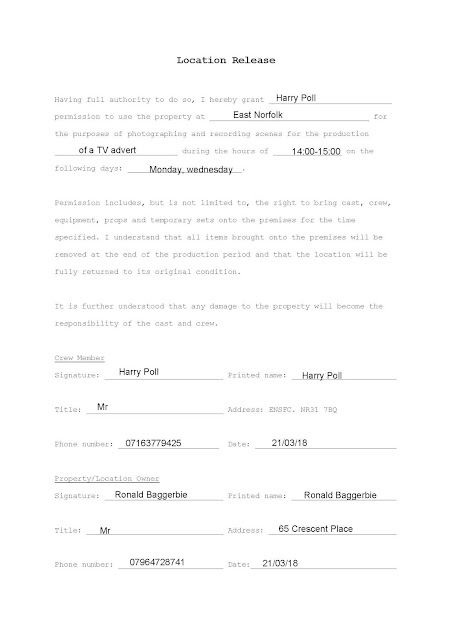An introduction to the news
An Introduction to the news
I researched news stories on the 27/09/2018
The stories consisted of
1. Grenfell Inquiry: Fears fire crews
would not survive, says chief.
2. Adultery is no longer a criminal
offence in India.
3. Uber pays $148m over data breach
cover-up.
4. Hayabusa 2 rovers send new images
from Ryugu surface.
The opening sequence for the news
showed the BBC news logo and a theme song to familiarise its viewers with an
opening sequence they can recognise. At the start of the show the presenters
gave a little bit of background to the stories.
Part 2
The newsreaders were Dan Walker, 47, from West Sussex and Louise Minchin, 50, from British Hong Kong. To be a news reader you would have to have good speaking skills and be well spoken. Most newsreaders have to research topics and background information for items to be featured on the programme, plan and rehearse shows, write and sometimes memorise scripts, keep the programme running to schedule, read from a script or improvise, etc.
News ordering is a term to describe the order in which news stories are told. There is a reason news stories are told in a certain order, for example, a news broadcast typically starts off with more serious and dire news stories that affect the majority of people and end with a more light hearted and nice story to leave a nice impression on the public.
The ability to think and act quickly as a news broadcaster is very important because everything that happens is brought to the audience live and anything can happen, such as, the presenter can’t read the script because of technical difficulties, the present may have to improvise and think fast. Abother reason is because the news is normally live, the presenter(s) only have one take and they have to act quickly and have good communication.
The term ‘news values’ determines how much prominence a news story is given by a media outlet, and the attention it is given by the audience. They explain how editors and other journalists decide that one piece of information is news while another isn't.
Frequency: Events that occur suddenly and fit well with the news organization's schedule are more likely to be reported than those that occur gradually or at inconvenient times of day or night. Long-term trends are not likely to receive much coverage.
Familiarity: To do with people or places close to home.
Negativity: Bad news is more newsworthy than good news.
Unexpectedness: If an event is out of the ordinary it will have a greater effect than something that is an everyday occurrence.
Personalisation: Events that can be portrayed as the actions of individuals will be more attractive than one in which there is no such "human interest."
Meaningfulness: This relates to the sense of identification the audience has with the topic. Stories concerned with people who speak the same language, look the same, and share the views, etc.
Reference to elite nations: Stories concerned with global powers receive more attention.
Reference to elite persons: Stories concerned with the rich, powerful, famous and infamous get more coverage.
Conflict: Opposition of people or forces resulting in a dramatic effect. Stories with conflict are often quite newsworthy.
Continuity: A story that is already in the news gathers a kind of inertia. This is partly because the media organizations are already in place to report the story.
Composition: Stories must compete with one another for space in the media. For instance, editors may seek to provide a balance of different types of coverage, so that if there is an excess of foreign news for instance, the least important foreign story may have to make way for an item concerned with the domestic news.
Competition: Commercial or professional competition between media may lead journalists to endorse the news value given to a story by a rival.
Co-optation: A story that is only marginally newsworthy in its own right may be covered if it is related to a major running story.
Predictability: An event is more likely to be covered if it has been pre-scheduled.
Data: Media need to back up all of their stories with data in order to remain relevant and reliable. Reporters prefer to look at raw data in order to be able to take an unbiased perspective.
The first story was about the Grenfell tower fire and how the fire brigade feared for their lives as they entered the “disaster movie” like building. The story was about the victims of the fire and the fire brigade. I felt empathetic for the victims of the fire and for the fire brigade.
Bias through selection and omission
An editor can express bias by choosing whether or not to use a specific news story. Within a story, some details can be ignored, others can be included to give readers or viewers a different opinion about the events reported. Only by comparing news reports from a wide variety of sources can this type of bias be observed.
An example is President Obama speeches.
Bias through placement
Where a story is placed influences what a person thinks about its importance. Stories on the front page of the newspaper are thought to be more important than stories buried in the back. Many television and radio newscasts run stories that draw ratings first and leave the less appealing for later.

Comments
Post a Comment